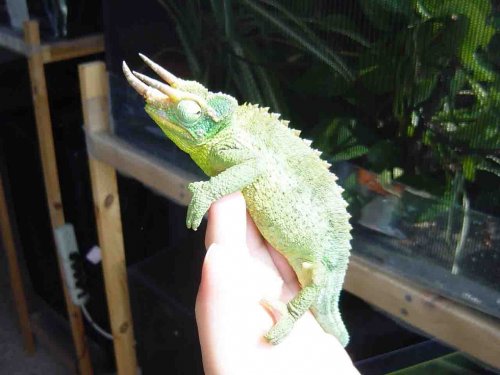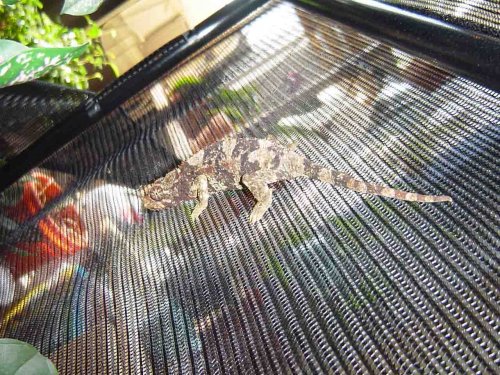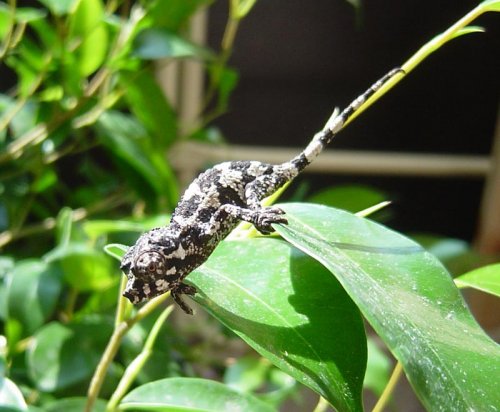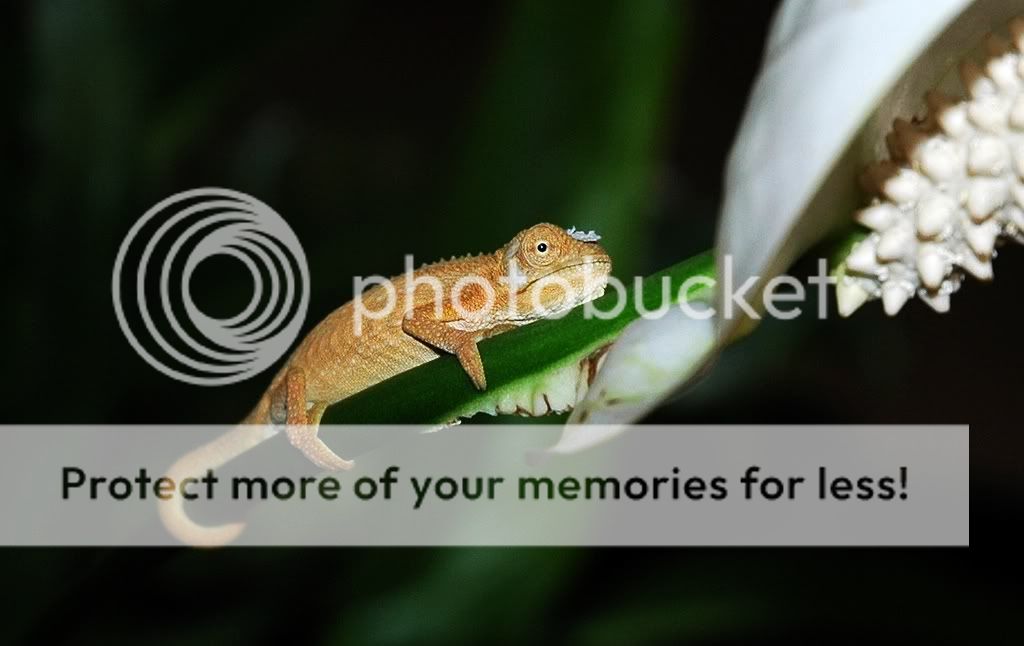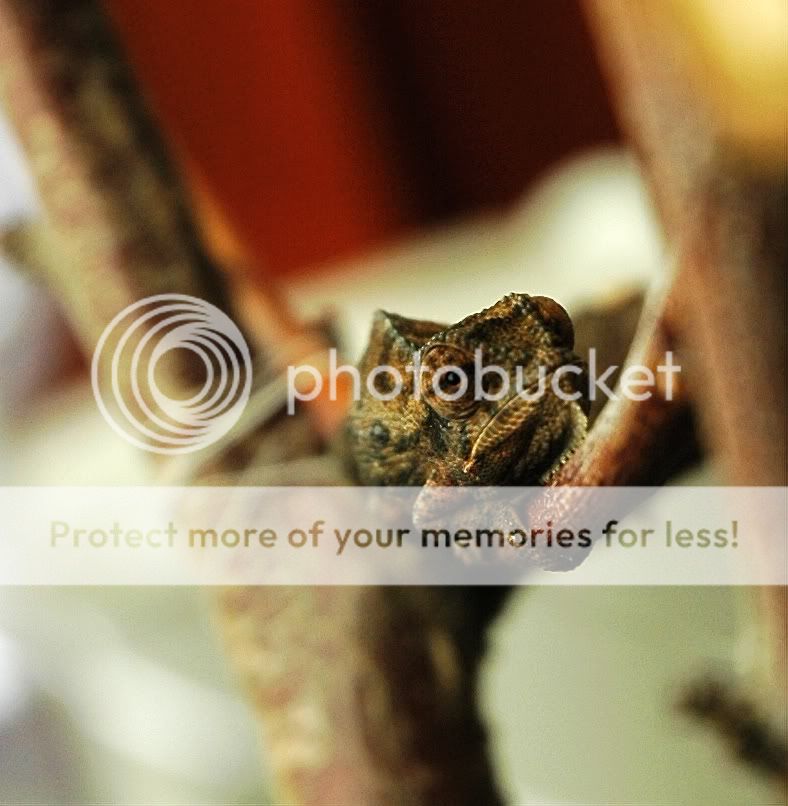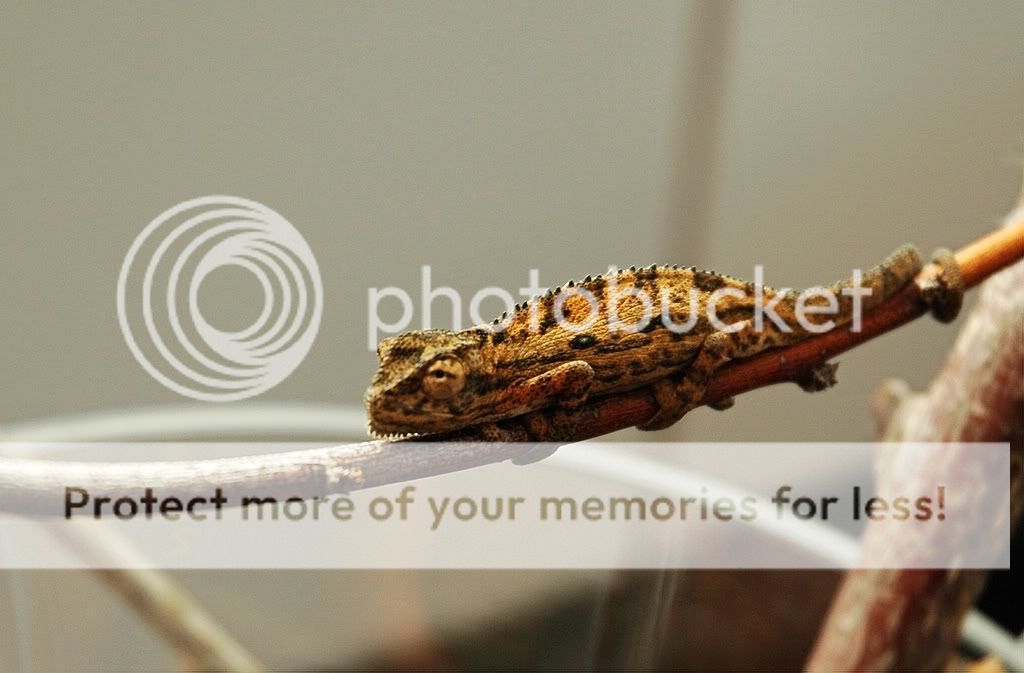Hi cham lovers,
glad to have found this forum.
we found this little beauty outside the garden 3-4 days ago. been feeding him/her (dont know which one it is) house flies. We do not know the species of it, nor the gender. I tried to look behind the tail underneath, but there seems just one whole--presume it is for the droppings, there is nothing els sticking out or hanging...(lol). So we can not tell if it is male or female. Would really love to know that.
Got a lot of ideas from this forum: we bought a fish tank for skinny (his/her name) as the home, I put a pot with soil in it and "planted" some umbrella tree leaves and ficus branches and peach tree branches (skinny was found on the peach tree outside the garden) in the soil.
I started to catch other flying insects for skinny, very difficult. I bought a tin of crix, but skinny doesnt really like it, maybe it is too big, bigger than the head. Skinny had one bite of the cut crix yesterday and spit it out. Today he had a smaller bite.
Does chams eat fly worms? I can breed a lot in the bin outside in the garden. very meaty.
Skinny is very tiny, about 5cm long in the body plus 4-5 cm long tail. Less than 1cm wide. Really wanted to upload a pic, but the uploading takes 4ever...
Pls give me suggestions. Cham lovers.
kristi
glad to have found this forum.
we found this little beauty outside the garden 3-4 days ago. been feeding him/her (dont know which one it is) house flies. We do not know the species of it, nor the gender. I tried to look behind the tail underneath, but there seems just one whole--presume it is for the droppings, there is nothing els sticking out or hanging...(lol). So we can not tell if it is male or female. Would really love to know that.
Got a lot of ideas from this forum: we bought a fish tank for skinny (his/her name) as the home, I put a pot with soil in it and "planted" some umbrella tree leaves and ficus branches and peach tree branches (skinny was found on the peach tree outside the garden) in the soil.
I started to catch other flying insects for skinny, very difficult. I bought a tin of crix, but skinny doesnt really like it, maybe it is too big, bigger than the head. Skinny had one bite of the cut crix yesterday and spit it out. Today he had a smaller bite.
Does chams eat fly worms? I can breed a lot in the bin outside in the garden. very meaty.
Skinny is very tiny, about 5cm long in the body plus 4-5 cm long tail. Less than 1cm wide. Really wanted to upload a pic, but the uploading takes 4ever...
Pls give me suggestions. Cham lovers.
kristi


